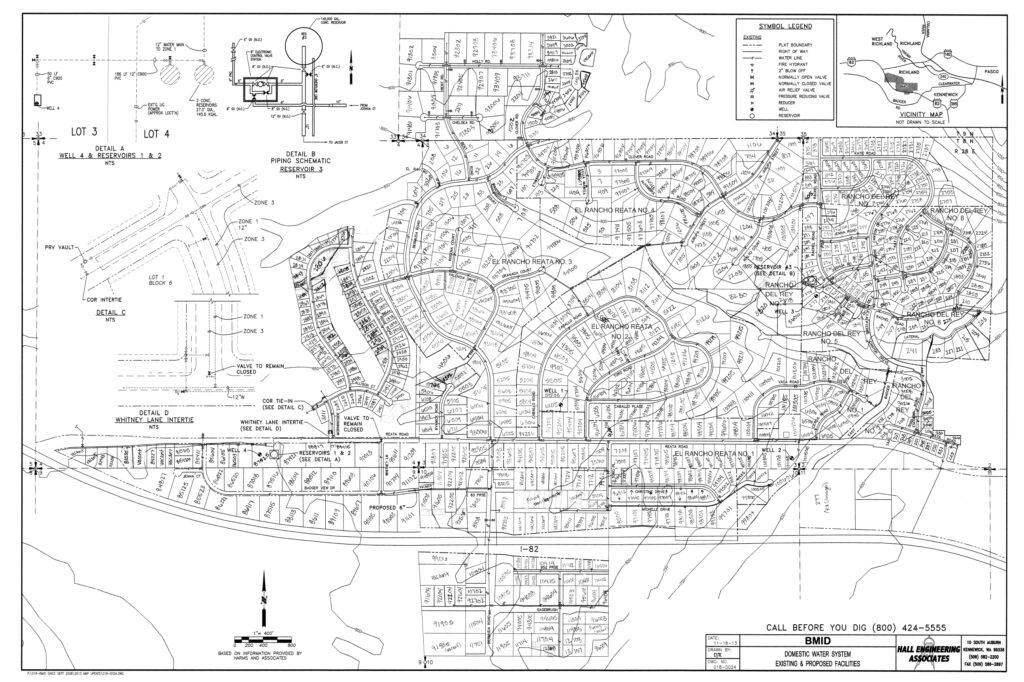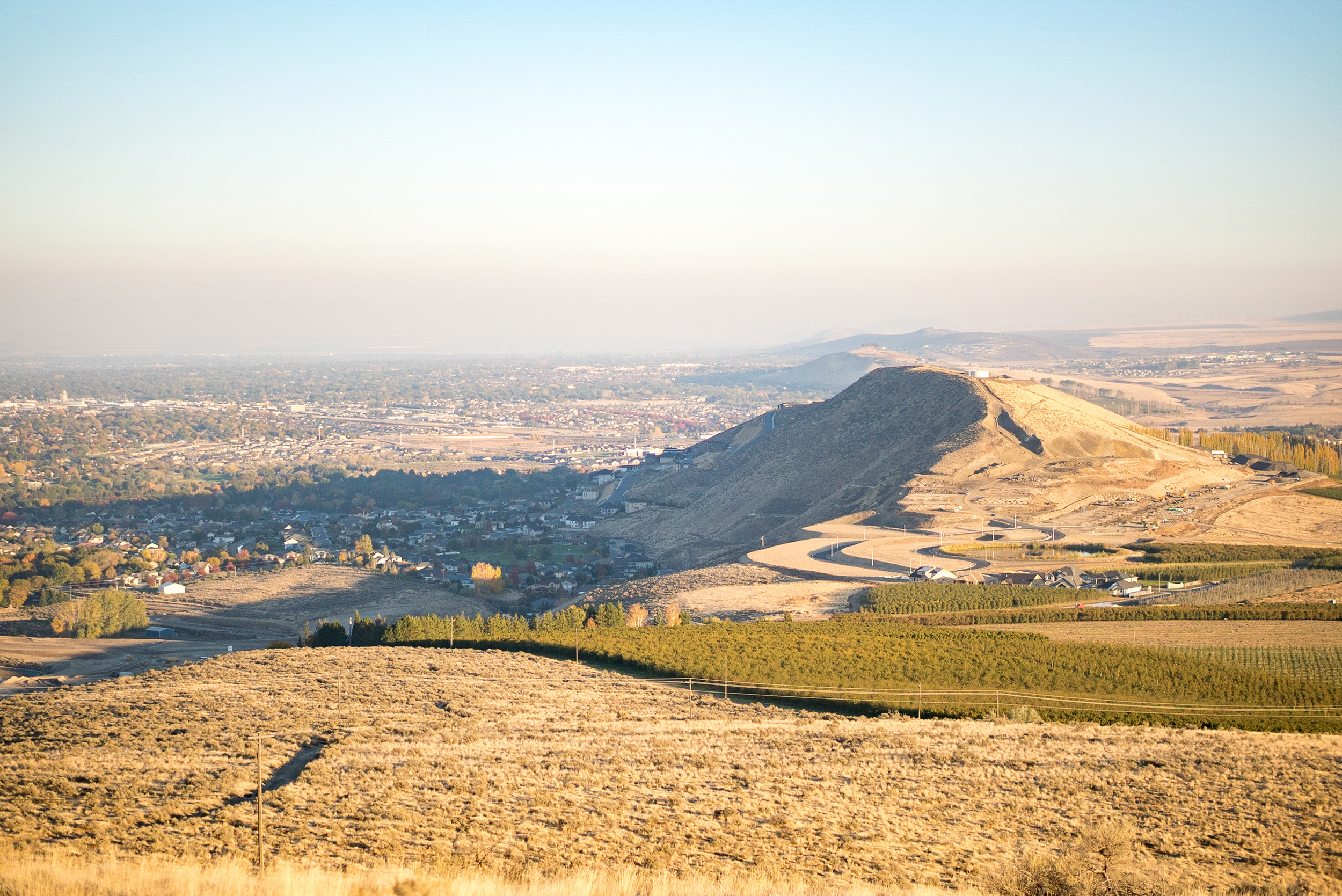Drinking Water Planning Resources
Domestic Water Availability
One of the requirements for the issuance of a building permit from either the county or the City of Richland is acquiring a Water Availability Letter from the respective water utility. (BMID or the City of Richland).
The current charge for a water availability letter from BMID is $2100.00. Call the City of Richland for their current rate.
To find out which utility serves you, call either BMID or COR for information.
Water Quality Report
Each year, the Department of Health requires water systems to create a water quality report and distribute it to our customers. Our annual report details the sources of our drinking water, results of routine compliance lab tests for contaminants, our water use efficiency efforts for the year, and other information about the district.
Drinking water Specs from the City of Richland
Cross Connenction Control Program
As your domestic water provider, it is the District’s responsibility to provide our customers with water that is safe under all foreseeable circumstances and meets water quality standards. The District monitors the entire distribution system on a 24/7 basis.
We systematically check water quality on a variety of schedules; some daily, some monthly and some annually. The District must take reasonable precautions to protect the community water distribution system from various potential contaminants and water-borne pathogens such as coliform bacteria to name a few. Another less obvious precaution that the District has in place is a Cross Connection Control Ordinance (BMID Resolution # 2001-11) and a Cross Connection Control Operating Policy. The Ordinance and Policy are designed to protect our community’s water distribution system from hazards associated with the accidental backflow or back-siphonage of water from an individual residence back into the water distribution system.
Please contact the District if you have or intend to use potable water for anything other than internal domestic use only. The BMID cross-connection specialist will assess each proposed non-traditional use on a case-by-case basis. Examples include the filling of stock watering troughs or swimming pools. There are several premise isolation techniques that are available to the customer.
In accordance with BMID Resolution 2001-11, “water service to any premises shall be contingent upon the customer providing cross-connection control in a manner approved by BMID.” No cross connections shall be created, installed, used, or maintained within the territory of BMID except in accordance with these regulations.
Definitions:
What Is A Cross Connection?
A Cross connection is any actual or potential physical connection between a potable (domestic) water line and any pipe, vessel, or machine containing a non-potable fluid or has the possibility of containing a non-potable fluid, solid, or gas, such that it is possible for the non-potable fluid, solid or gas to enter the water system by backflow.
Example: Connect your irrigation distribution system to your household potable water system. This is what is called a direct connection and is definitely not allowed by BMID without the installation of a proper backflow assembly.
What is Backflow?
Backflow is flow in reverse from the normal direction of flow in a piping system. This is caused by a pressure differential existing from one pipe system to another (e.g., a fluid of a higher pressure flowing to the fluid of lower pressure). Backflow may occur due to either back-siphonage or backpressure.
Example: Within the BMID service area, the irrigation system pressure is in almost all cases, higher than the potable system pressure at any given location. Accordingly, if a direct connection were made between the two systems, contaminated irrigation water could easily flow (due to backpressure), into a home’s drinking water pipe system and possibly out into the main distribution lines in the street thereby potentially threatening the water quality for many homes in the community.
What is Back-Siphonage?
Back-siphonage is caused by negative pressure in the supply piping
Example: Some common causes of back-siphonage are 1) high water velocities within the distribution pipelines, 2) a line repair or break that is lower than a service point (connection), and 3) lowered main pressure due to a high water withdrawal rate such as fire fighting or water main flushing.
If needed, please contact BMID for more information concerning this important matter or visit the Washington Department of Health website.



